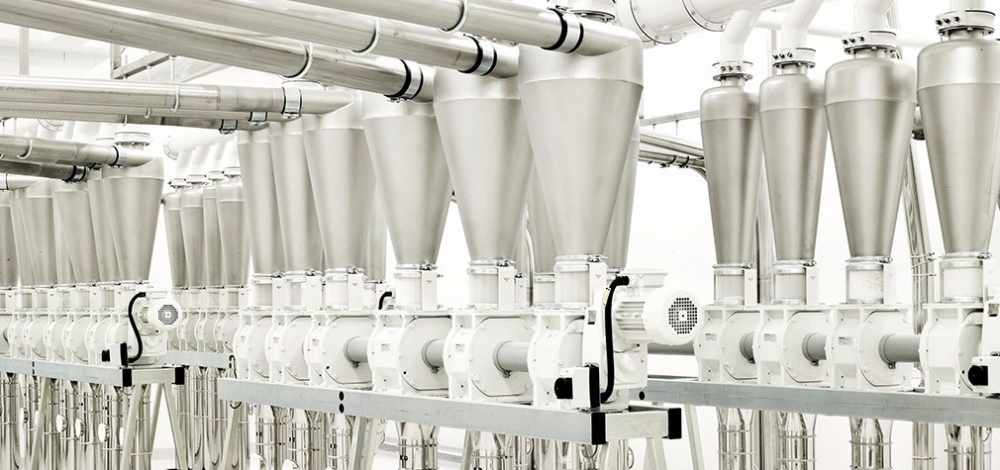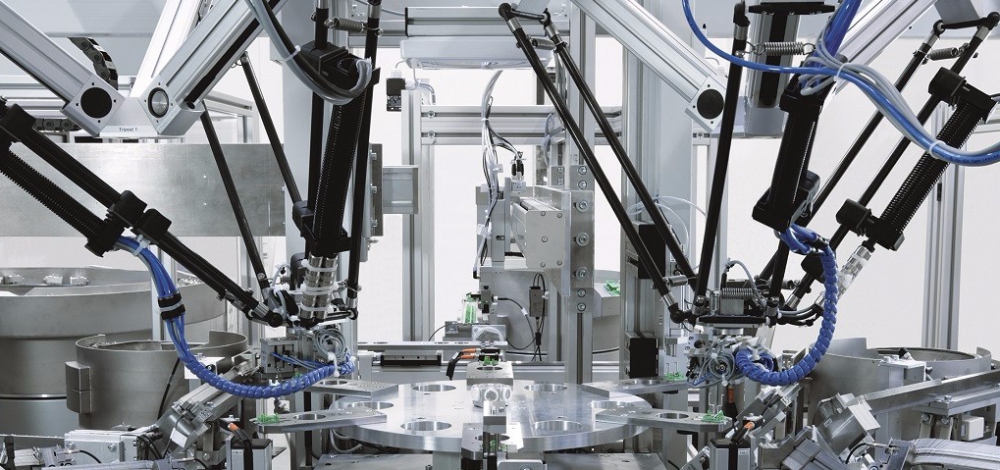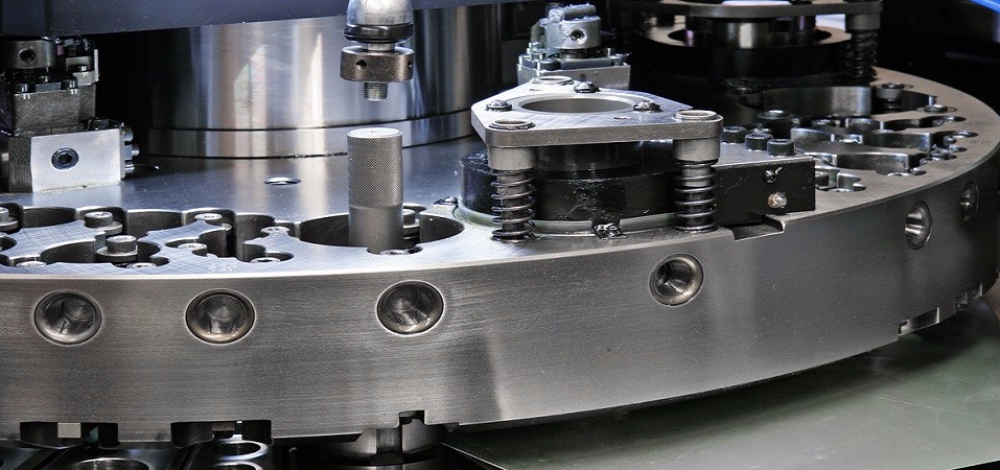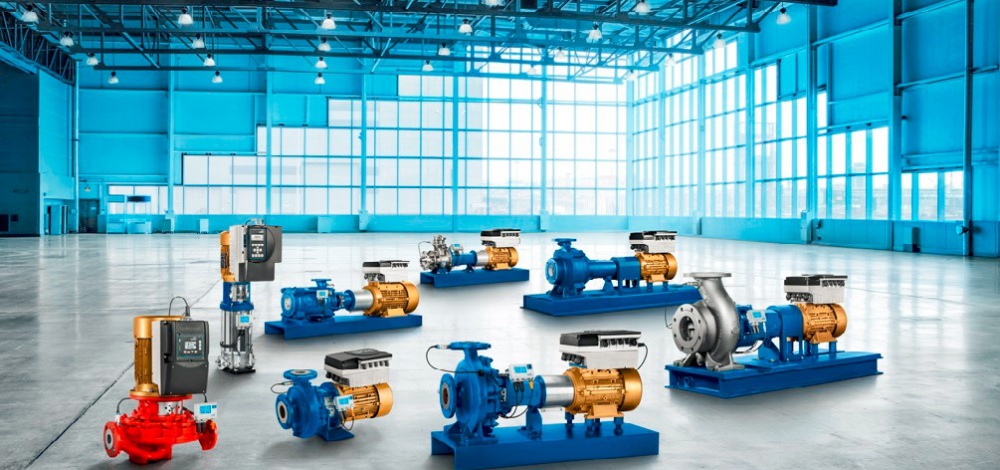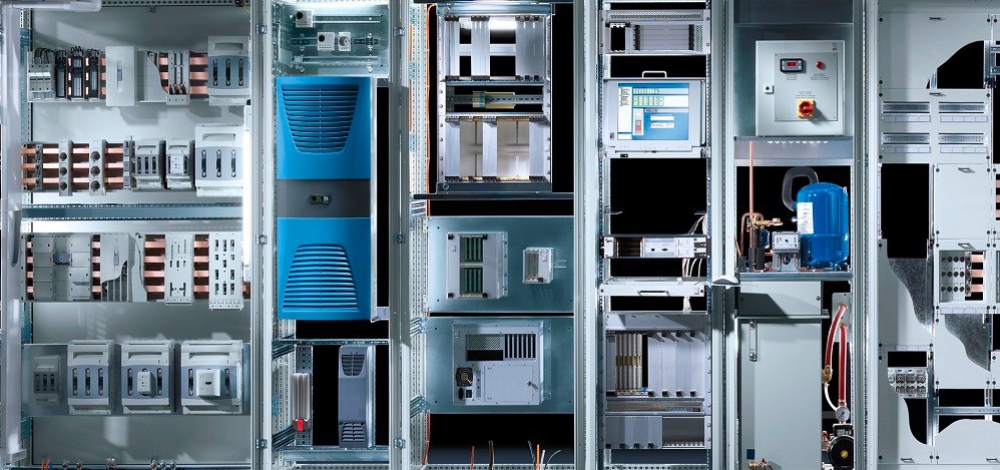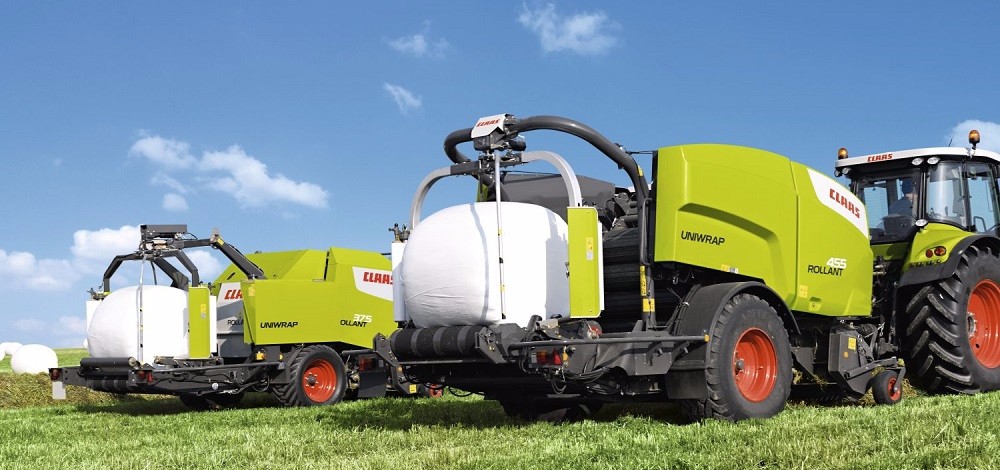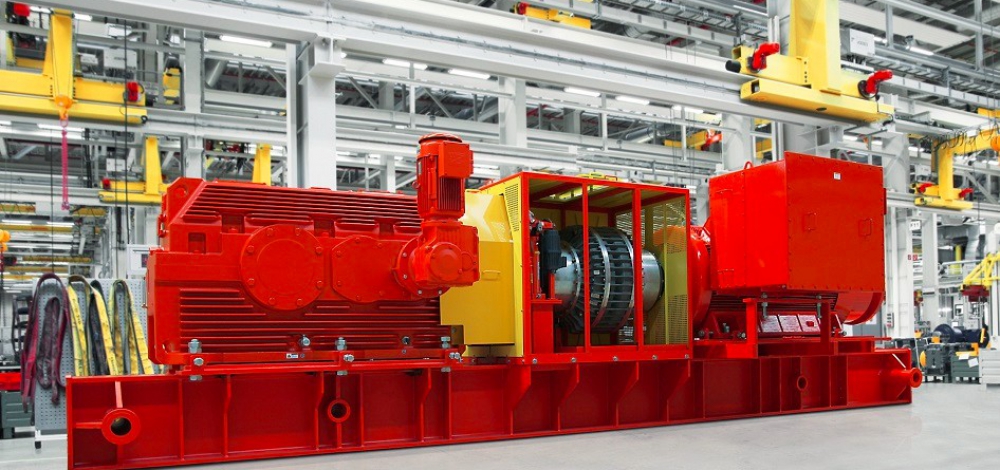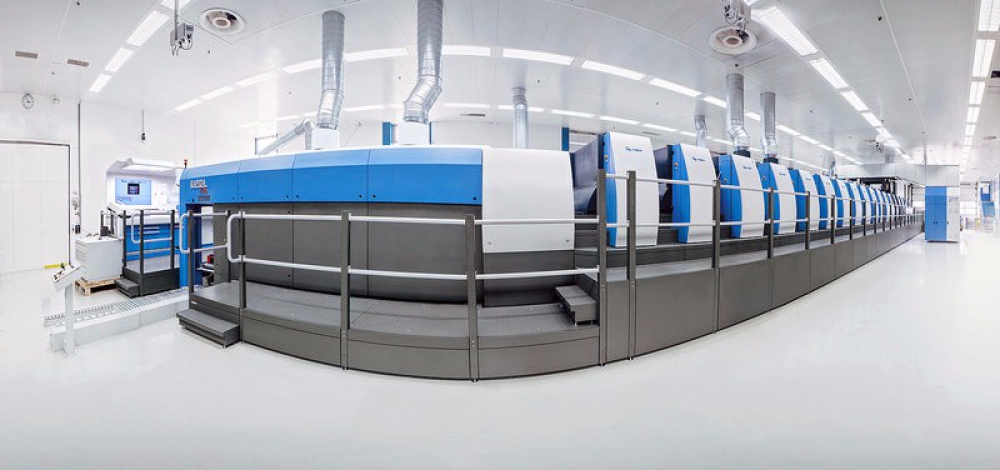Modularization and product configuration are becoming more and more important in the next years.
Modularization is an attempt to combine the advantages of standardization and cost reduction with those of individualization through customizable products.
Modularization with product configuration is an attempt to combine the advantages of standardization (scale effects with high volume and low manufacturing costs) with those of individualization (scope effect with configuration) through customizable products. Depending on the extent and depth of modularity and the costs of interfaces, a poor modular design will neither perform in flexibility to cover the market requirements nor in cost reduction in manufacturing and purchasing to meet the target costs.
With our methods to excellent modular products
To be second to none in Modularization and Configuration, all three disciplines must be fulfilled.
- Customer Intimacy: Design your products tailormade exactly to the customer’s need and use product configuration
- Product Leadership: Focus on being most flexible in configuration and first-to-market with innovation and new products to achieve price premium
- Operational Excellence: Optimize all processes and purchasing to deliver at the lowest cost with scale effects
Modularization and Standardization of variant-rich Products
Almost all industries are faced with the challenge to offer a wide range of individually customized products at low prices. By analyzing the product structure with in-depth analysis, it is very often found, that these products have no major differences. Variant management and modularization ensures the re-use of product components by using predefined modules. In this regard, a system is subdivided in smaller modules and parts. Modular product architecture and platform design can be characterized by functional partitioning into discrete scalable, reusable modules to combine them more flexible to individual customer products – product configuration.
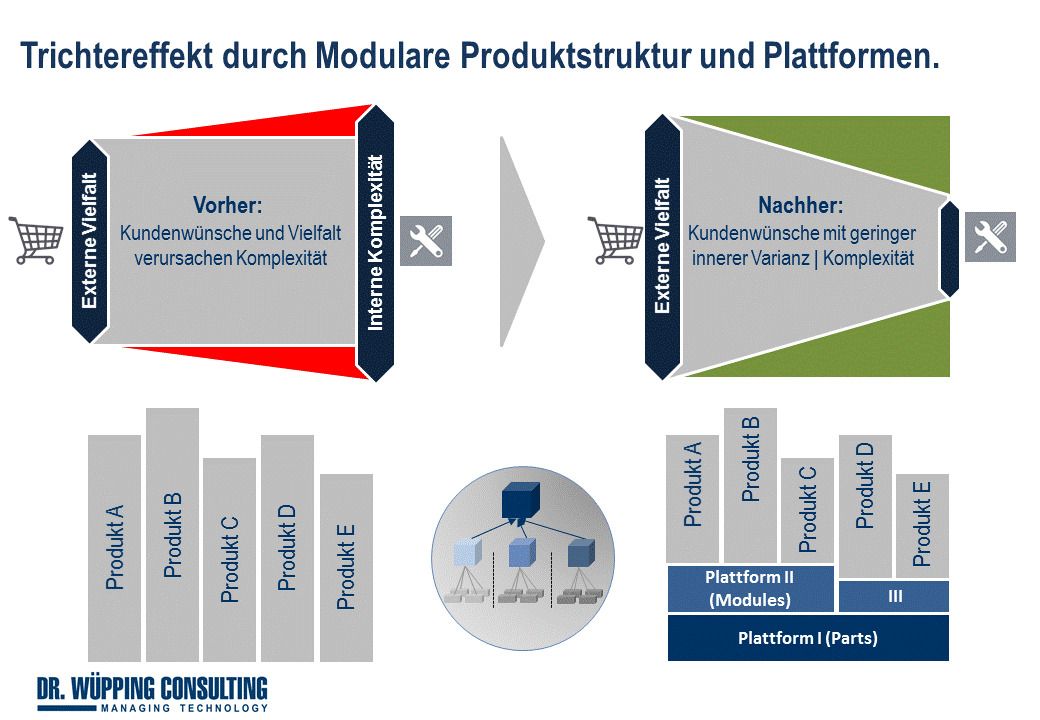
Produktmodularisierung und Varinatenmanagement
funnel view in product architecture
But efforts will fall short, however, unless these companies understand to deliver individual products (scope: individual customer requirements) with standards and repetitive processes (scale: economies of scale in products and processes). From the very beginning it is important to take all requirements from the involved departments into account as sales, product management, engineering, purchasing and production. Variant management ensures that every product element (module) is re-used in a systematic and efficient way. Therefore, a modular system needs well-defined modular interfaces, in order to make use of combination and configuration.
If the modules have standardized interfaces, each variant can be build out of different product models without any constraint. Combining these variants in different ways creates an almost limitless number of product configurations through multiplication.
In Engineering and Production you have just to maintain the addition of the different module variants.
Challenge Modular Product Structure and Interfaces
One secret to success is to find the most suited interfaces and to maintain the architecture through the product life cycle. That is the core of modular design which enables mass customization. Mass Customization in this context namely "Configure-to-Order" of complex products means, the definition of modular product packages and their configuration on demand, to fit customer-specific needs.

modular management: key to success - is not as simple as it looks
In the first step it is necessary to understand the complexity of your product range to identify complexity and cost drivers. On this basis, a variant management strategy can be defined, that fits your business, your products and your customers.
This includes the planning of your product portfolio as well as the optimization of processes, structures and above all the cost reduction. The challenge is to reduce product costs and increase process efficiency. With methods like Target Costing on lever modules, Value Engineering and Design-to-Cost, product costs can be reduced significantly by considering the market and customer expected functions and prices.
After all, who still wants to be successful with its products tomorrow, must be able to deliver variants to the market and at the same time avoid costs in form of waste and complexity through modularization and product platform design. Important is a methodical approach and an effective cooperation between Customers, sales, engineering, production and purchasing.
Benefits in Modularization
What are the benefits of modularity and standardization?
Using a modular product design is a strategy to decrease time to market, increase the configurable product variants for the market and decreases the number of unique parts in production and supply chain. Combining this with design to cost will result in tremendous supply chain optimization.
Modularity is not standardization, modularity enables standardization?
There is an important difference between standardization and modularization. Standardization is attractive from a cost and quality perspective, but it conflicts with customer requirements. Modularization starts with flexibility where variety is needed.
To combine these methods and make use of configuration is the key for success. Modularization enables variety-management, making complexity manageable while still allowing for standardization.
As a market leader in Modularization, we use the most effective tools and methods to your specific requirements. We are a highly efficient partner for our clients and achieve up to:
- 15 to 25 % cost reduction in total costs
- 30 % increased profitability
- Up to 70 % parts reduction
- 40 % decreased cost of order processing
- 25 to 70 % reduced lead time
- Reduce assembly time by up to 60%
- Reduce time to market by up to 70%
- Reduce stock by 30%
To attain these objectives, we work with the following methods:
- Complexity Management
- Market Requirement Specification/Management (Analysis of customer requirements and prices obtainable in the market)
- Market and Supply Chain driven product architecture
- Product structuring, Standardization, Modularization and Platform strategy
- Design-to-Cost, Value Analysis,
- Value Engineering and Target Costing
- Product- and Process Engineering for manufacturable design
Our Offer: Consulting in Modularization and Standardization
We support you in the development of cost-optimized product platforms and the modularization and value engineering of your product range. Benefit from 20 years of experience and more than 200 projects in cooperation with many leading companies.

